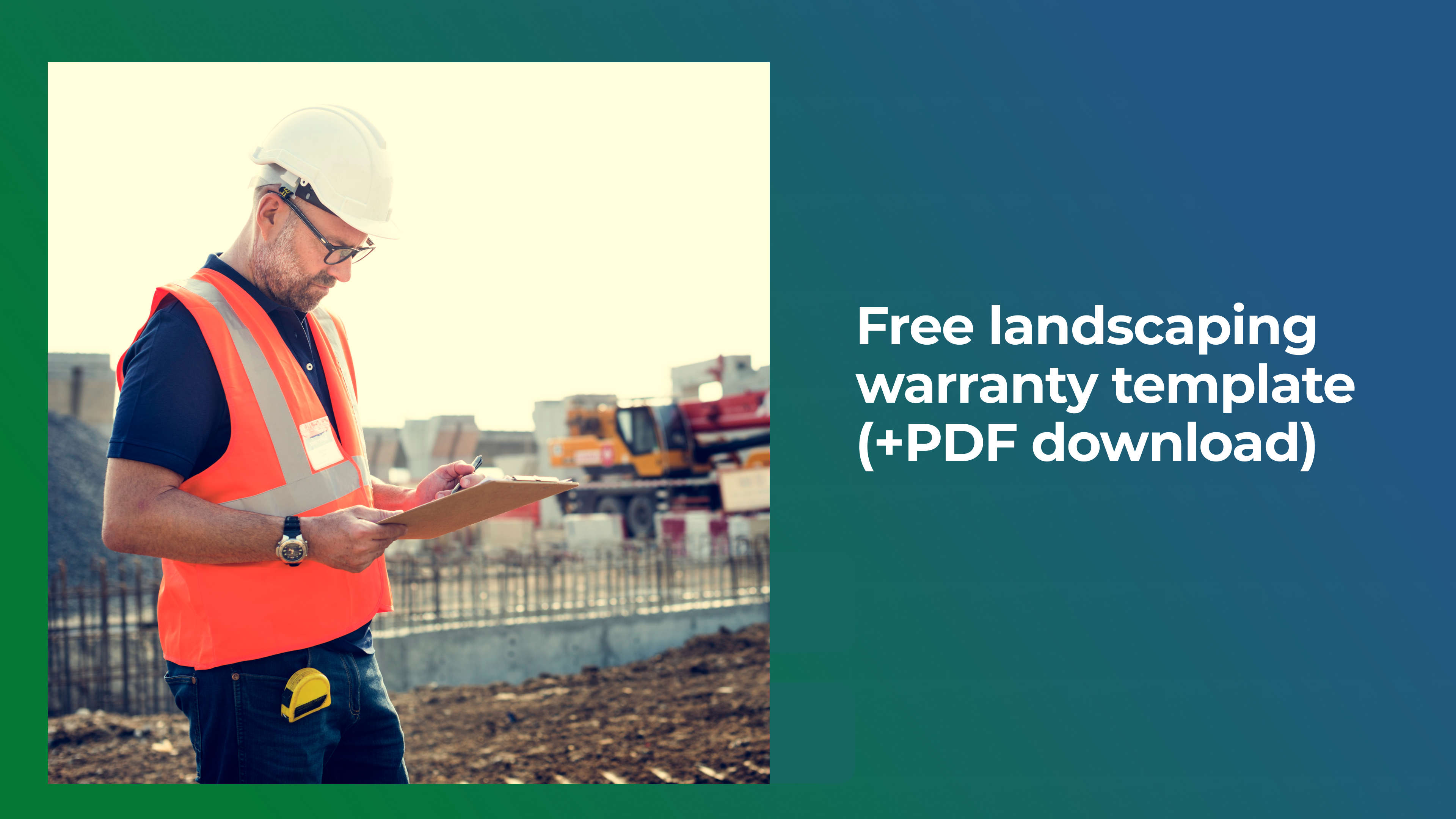Table of Contents
Table of Contents
- Introducing your landscaping risk assessment template
- What is risk assessment in landscaping?
- Why is risk assessment important for landscaping businesses?
- What are the key components of a landscaping risk assessment template?
- What's the difference between a method statement and a risk assessment?
- Going beyond templates: Grow and safeguard your business with Aspire
- The bottom line
Risk assessment in landscaping is key to identifying and minimising the risks affecting worker safety and project time. Proper risk assessment is about evaluating the risks to assess the hazards, putting controls in place and prioritising the hazards to control to reduce the risks and ensure safety.
Without taking time to conduct a thorough risk assessment, you’ll have accidents, project delays and increased liability, ultimately harming your business.
Our free landscaping risk assessment template makes this process easy and is a tool for safety planning and risk reduction.
Download now to start operating safer work sites.

Introducing your landscaping risk assessment template
Our landscaping risk assessment template is designed to streamline safety planning and improve on-site safety. To use the template effectively, follow these steps:
Download template. Download the template in PDF format.
Identify hazards. Identify hazards related to your landscaping work, such as manual handling, power tools, fertilizers, etc.
Assess risks. Evaluate the identified hazards to determine the potential impact and likelihood.
Risk rating. Assign a risk level to each identified hazard to prioritise safety efforts.
Control measures. Document the measures to mitigate each identified risk, including PPE and training.
Record keeping. Ensure all safety documents and risk assessments are kept for future reference and compliance.
Customization: Add your company branding or extra fields relevant to your business.
Review and update: Review and update the risk assessment regularly to reflect any changes to your work site or processes.
Follow these steps, and then let’s explore what risk assessment in landscaping means and why it’s important.

What is risk assessment in landscaping?
Risk assessment in landscaping involves identifying and evaluating the risks that can impact landscaping projects, worker safety, and efficiency. These risks include equipment failure, weather events and chemical exposure to hazardous substances.
For example, a faulty power tool or severe weather can threaten worker safety, and improper fertiliser and pesticide handling can pose chemical exposure risks. Conducting a proper risk assessment helps you anticipate these risks and implement mitigating controls.
Knowing these risks is key to a safe work site. Now, we’ll look at why risk assessment is important for running a landscaping business.
Why is risk assessment important for landscaping businesses?
Risk assessment is crucial for identifying and managing potential hazards in landscaping projects. It not only ensures the safety of workers but also contributes to overall business efficiency and profitability.
Identifies and prioritises the hazards: Hazard assessment helps you identify the biggest risks in landscaping projects so you can address them first.
Develop controls. By identifying the risks, you can develop mitigation strategies, personal protective equipment (PPE), safe work practices, etc.
Creates a safer work site. Conducting risk assessments promotes a safety culture and reduces accidents and injuries.
Reduces liability and insurance costs. Showing you comply with health and safety standards can reduce insurance premiums and liability.
Improves project planning and resource allocation. Knowing the risks allows for better planning and resource use.
Enhances reputation: A good safety record can improve your business reputation and get more clients.
Ensures compliance: Regular risk assessments help you comply with health and safety regulations.
Boosts employee morale: Employees will feel more valued and secure in a business that prioritizes their safety.
Protect workers from the identified hazards: Controls are key to protecting workers, properties, civilians and the environment.
Next, we will discuss the key components of a landscaping risk assessment template.

What are the key components of a landscaping risk assessment template?
A well-structured risk assessment template will include:
Hazard Identification. A list of all the hazards on site, such as equipment failure, weather, chemical exposure, etc. You need to have occupational safety knowledge to identify and assess these hazards.
Risk Evaluation. An assessment of the severity and likelihood of each hazard to prioritise hazards and determine which risks need attention first.
Control Measures. Actions and strategies to eliminate or minimise the identified risks, such as PPE, safe work practices, regular equipment maintenance, etc.
Responsible Person(s). Clearly identified person(s) to implement and monitor control measures to ensure accountability.
Review Date. A date to review and update the risk assessment to reflect changes in the work site or procedures.
Additional Health & Safety Information. Space for notes, diagrams or photos to provide more information or details about the risks and controls.
Next, we will discuss the difference between a method statement and a risk assessment.
What's the difference between a method statement and a risk assessment?
A risk assessment identifies hazards and evaluates their severity and likelihood; it’s about preventing accidents and injuries. A method statement is a detailed plan of work outlining the steps and procedures to do the job safely and efficiently. A risk assessment says what can go wrong, while a method statement says how to do it right.
For more information, check out our landscaping method statement template.

Next, we will discuss how Aspire can help you grow and safeguard your landscaping business.
Going beyond templates: Grow and safeguard your business with Aspire
Aspire is a cloud-based business management platform that simplifies landscaping operations and safety. Aspire’s features include managing risk assessment documents and tracking safety protocols throughout the project lifecycle, addressing all hazards and safety issues as they arise.
Aspire’s job costing also includes safety equipment and procedures so you can budget and plan your projects more accurately.
With Aspire’s real-time data and custom reports business owners can make informed decisions to improve productivity and accountability. Aspire also has scheduling, resource allocation and job tracking so you have a comprehensive view of the whole operation.
Having all aspects of your landscaping business in one place, Aspire will help you have a safer work site and reduce liability and insurance costs.
Aspire’s features support health and safety regulations and help create a safety culture within your team by identifying and addressing safety hazards.
The bottom line
Risk assessment is essential for landscaping businesses to be safe, efficient and profitable. A full risk assessment template will help you identify and mitigate hazards and protect workers and clients.
By conducting detailed hazard identification, risk evaluation, and control measures, landscape professionals can create a safer work site and reduce liability and other mistakes landscaping businesses make.
Aspire’s platform has the tools to simplify risk assessment, manage safety protocols and improve operations.
With job costing, real-time data and custom reporting, Aspire helps you make informed and more productive decisions. You can build client trust and stand out from the competition by showing your commitment to safety.
Take the next step to improve your landscaping business by booking a free demo with Aspire today.











